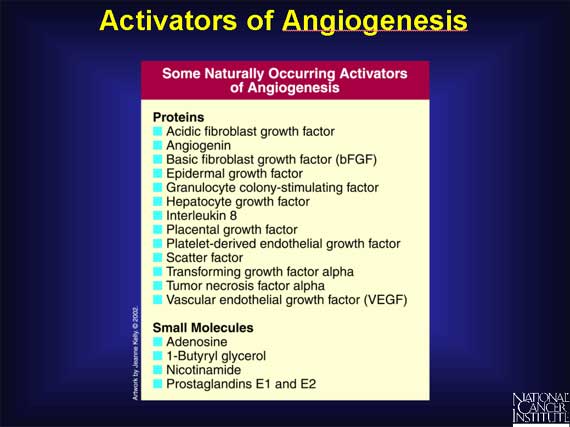|
Once researchers knew that cancer cells could release molecules to activate the
process of angiogenesis, the challenge became to find and study these
angiogenesis-stimulating molecules in animal and human tumors.
From such studies more than a dozen different proteins, as well as several
smaller molecules, have been identified as "angiogenic," meaning that they are
released by tumors as signals for angiogenesis. Among these molecules, two
proteins appear to be the most important for sustaining tumor growth: vascular
endothelial growth factor (VEGF) and basic fibroblast growth factor (bFGF).
VEGF and bFGF are produced by many kinds of cancer cells and by certain types
of normal cells, too.

< Previous | Index | Next Slide > |